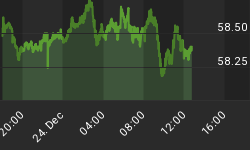Economic commentary is in a very poor state. Every change in the unemployment figures, consumer spending, the deficit, output, etc., is examined in the same way a fortune teller examines tealeaves, and with the same dismal results. What matters is analysis and not statistics.
Without the proper analytical tools these statistics are largely meaningless. The Fed's interest rate decisions are something that constantly exercises the minds of our economic commentariat. Will Bernanke raise them? Will he lower them? Will he keep them steady? Despite this speculative questioning the problem of meddling with interest rates is the one question that never arises.
It is taken as given that manipulating interest rates is a vital function of every central bank. At this very instant some commentators are arguing for further increases in rates to head off inflationary pressures. Others express caution, fearing that if rates are raised too much the economic growth will be killed off and the economy will slide into recession.
The thought that there is a connection between the manipulation of rates and the so-called boom-and-bust cycle is rarely given any consideration in the US media. (The Australian media is every bit as bad). Once we start to focus on rates and economic stability our attention should be drawn to the price rule, a rule that many commentators congratulated Greenspan on successfully adhering to and which, in their opinion, explains the economic success of the Clinton years.
According to this rule inflation is defined as too much money chasing too few goods. Therefore, if the Fed uses interest rates to match the money supply with output this will stabilise prices and remove the threat of recession. This theory treats minor rises in the CPI of 2 per cent or so as of little importance. It follows from the rule that falling prices are defined as too little money chasing too many goods and that this situation is dangerously deflationary.
This fear springs from the misguided belief that falling prices always squeeze profit margins and so depress economic activity. But the rule is based on a total misconception of the nature of inflation and deflation, and has become a dangerous recipe for economic instability.
The 1920s boom provides an enduring example of the damage the price rule can inflict on an economy. While qualitative economists like Benjamin M. Anderson and members of the Austrian School warned that the 'stable' price level was concealing a dangerous boom that would result in a depression, the likes of Fisher, Sir Ralph Hawtrey and Keynes interpreted this so-called stability as evidence that the economy was stable.
Dissenters tried to bring to public attention the fact that these so-called stable prices were concealing enormous imbalances that were being generated by excess credit, and that these imbalances would eventually have to be liquidated once the economy went into an unavoidable recession.
The same thing happened during the 1990s. In other words, failure to see that a comparatively stable price level can hide accumulating distortions led many to believe that the economy had entered a "new economic era", one that had permanently banished the business cycle.
It is truly ironic that though the qualitative economists of the 1920s were vindicated by subsequent events their Cassandra-like warnings were virtually lost to history while the free market got the blame for the Great Depression, just as it will get the blame for next recession.
















